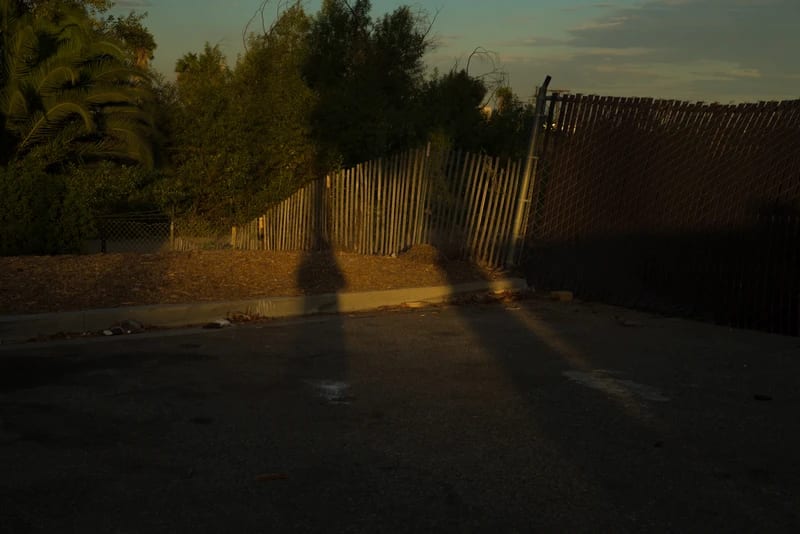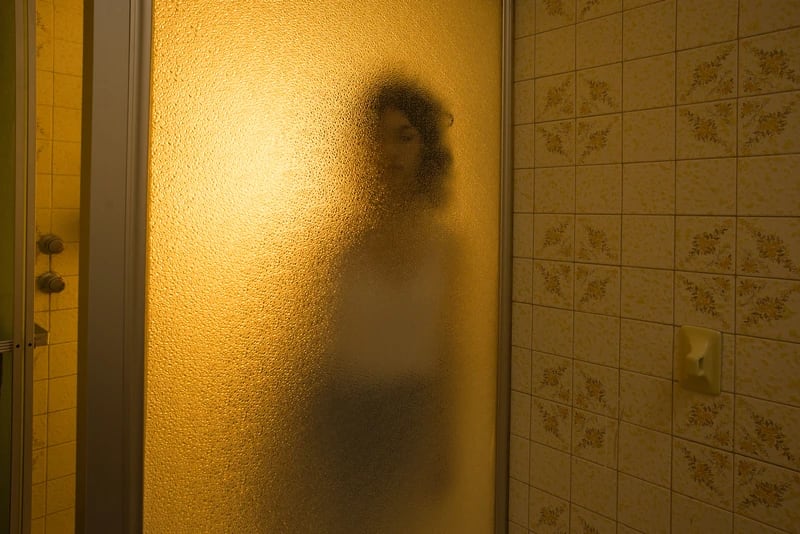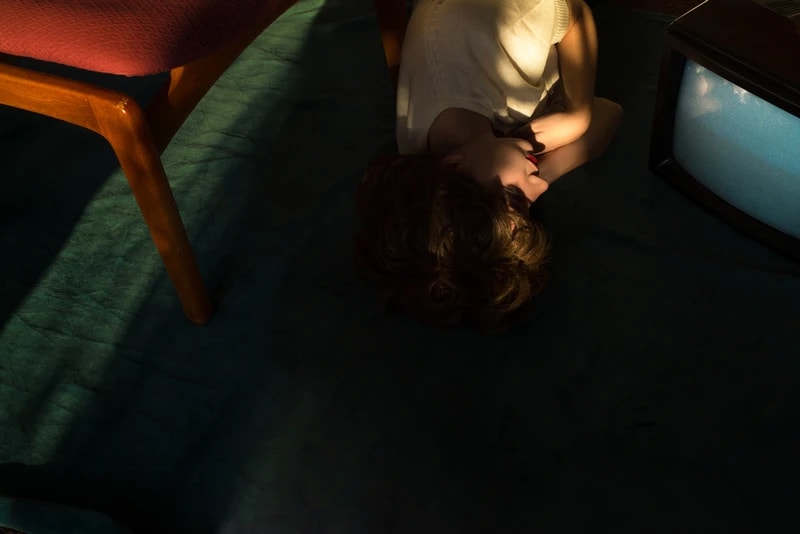And loneliness, indeed, is at the core of the series. In one picture, an old landline telephone is sitting on a blue-leather cushion stool by a large glass ashtray, filled with lipstick-stained cigarettes butts, denoting a long-awaiting phone call that clearly never arrived. In another picture, the photographer is seen passed out on a wooden kitchen surface, her face reflecting in an old-fashioned chrome toaster, camouflaged in a toupee and glasses, dreaming of another reality.
Her 2015 series Pest Control, in contrast, favours comical, multi-protagonist narratives. Taking inspiration from the concept of non-places (as coined by the French anthropologist Marc Augé, to describe spaces of transience like airports and shopping malls), the photographer has imagined a society in which pigeon spikes have cropped up all over the public sphere, as a kind of avoidance device for social ills. They adorn our shoes, furniture, train seats: pointing to collective hysteria while nodding at the growing trend in hostile urban design (which generally aims to restrict access to public spaces for the homeless).

Meanwhile, the ongoing series Fun Fair introduces a particular surrealist aesthetic, enabled by green-screen technology. The photographer documented some of the wildest attractions at amusement parks around London and, using digital retouching, altered what would otherwise be quotidian scenes into an epic spectacle in which fair-goers’ shoes are flying over a pastel-blue sky, reminiscent of a Magritte painting. Here, the depiction of the accidental, in its most trivial form, seems to reveal the cracks in the system of our overachieving, entertainment-obsessed society.
But the camera wasn’t Tania’s first choice. Before studying Fashion Photography at the London College of Fashion, she’d trained to be an architect and briefly worked with the leading Mexican architect Michel Rojkind. “Something was missing,” she says of her former profession, explaining that her interests always lied in the emotional sphere. “But the act of taking a picture, for me, is the last part of the work,” she continues, pointing to her sophisticated mises-en-scène, which reveal a sophisticated spatial awareness.

And it’s not just the carefully-composed sets that make up the theatricality in Tania’s work, it’s also the props — more precisely, her large collection of wigs. Similarly to Cindy Sherman (who Tania cites as an inspiration, alongside Martin Parr and Jimmy De Sana) the Mexican photographer’s self-portraits present an element of role play, aided by cheap hairpieces and other second-hand accessories. “It has come to a point where I talk about my own characters in the third person, as if they were real people!” she laughs, suggesting that she may well be as neurotic as the subjects in her work.
“For me, it’s when I don’t give in to these emotions that I win,” says the artist, reflecting on her struggle with the absurdist nature of late capitalism, which fuels her art with both lyricism and wit. “It’s not about photography,” she muses, “it’s about life.”












